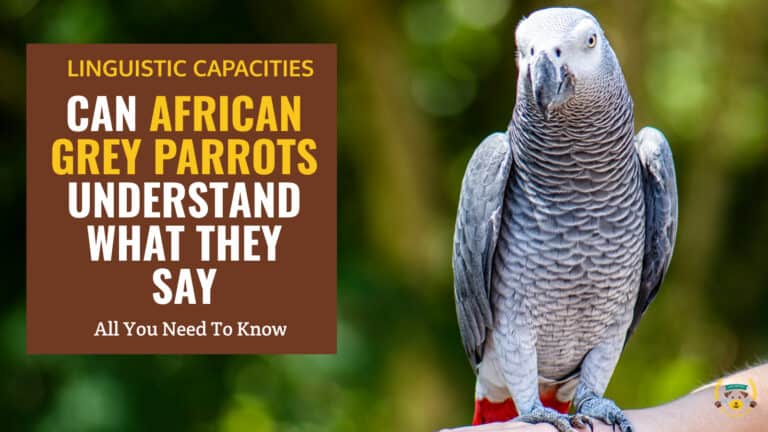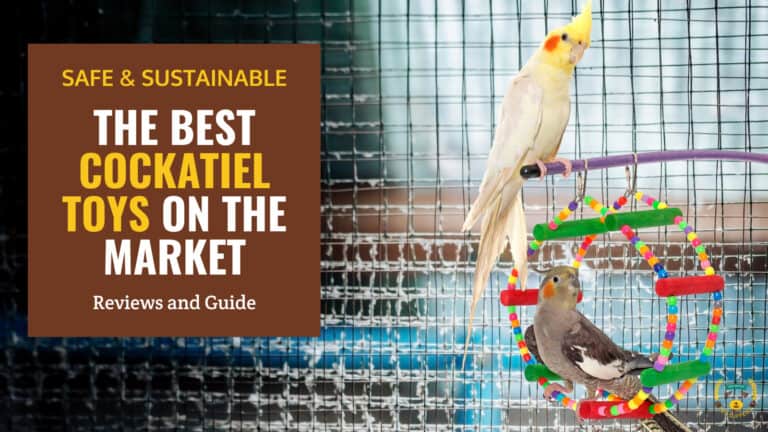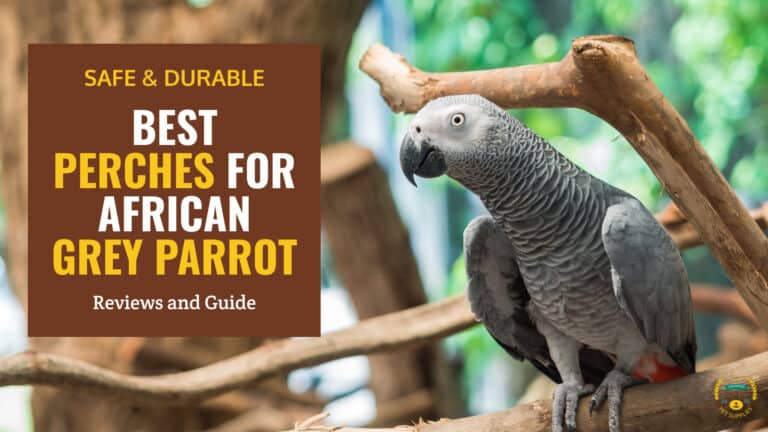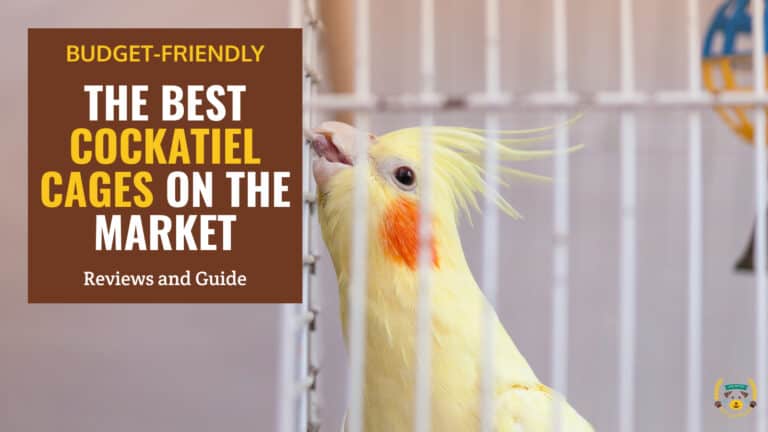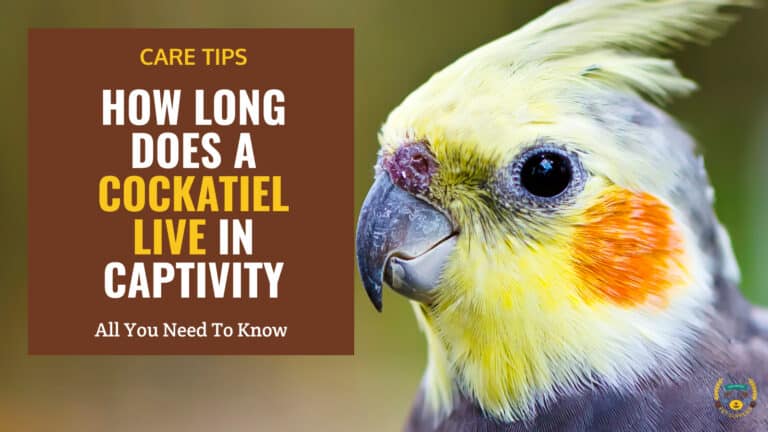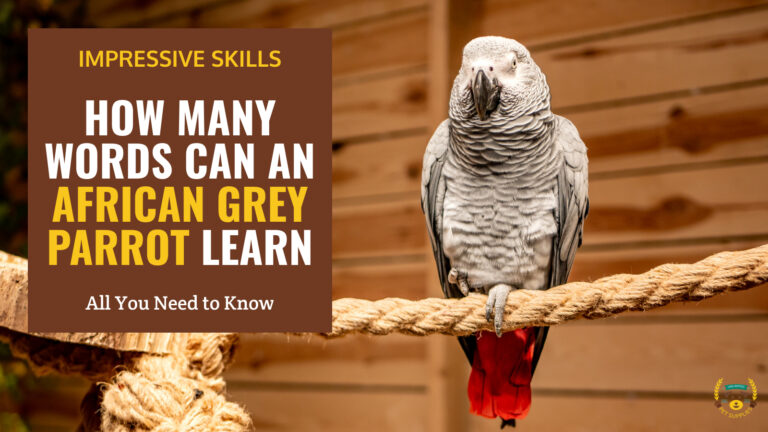What Is the Best Humidity Level for Amazon Parrot?
Last updated: January 11, 2024
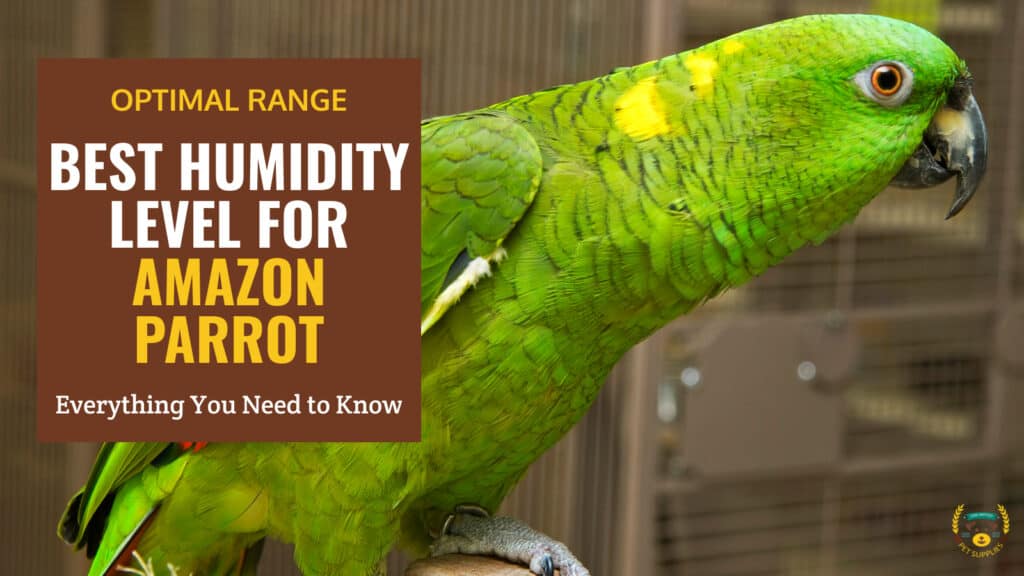
Summary
- Amazon parrots thrive in 40-60% humidity for optimal health.
- Low humidity (under 40%) causes dry skin, brittle feathers, respiratory issues, and behavioral changes.
- High humidity (above 60%) leads to fungal growth, poor feather quality, breathing problems, and lethargy.
- Monitor humidity with a hygrometer and adjust using misters, dehumidifiers, or cage placement.
- Consult an avian vet for severe humidity-related symptoms.
Amazon parrots, part of the Psittacidae family of birds, originate from the humid rainforests of Central and South America. In captivity, maintaining optimal humidity levels is essential for an Amazon parrot's health and well-being.
In this article, we will cover the optimal humidity range for Amazon parrots, and we will go through the potential dangers if humidity is too low or too high; we will also provide tips on keeping humidity levels ideal and help you spot issues caused by humidity early.
Let's get started.
Why Humidity Matters
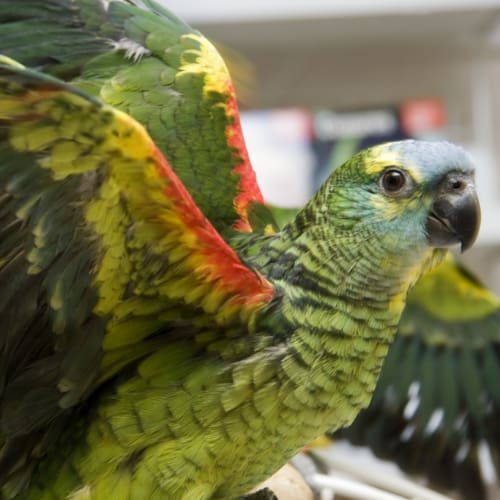
There are many benefits of the right degree of humidity within your amazon's cage. Here are a few examples:
- Controls shedding and feather quality. Low humidity causes feathers to become brittle and dry. High humidity can prevent proper molting.
- Impacts skin and nail health. Dry air leads to flaky, irritated skin. Humid air prevents dryness.
- Affects respiratory health. Both low and high humidity affect respiration and can worsen infections.
- Influences overall comfort and behavior. Birds may show signs of distress in overly dry or humid conditions.
Humidity requirements depend on the age and health status of individual birds. Chicks, for example, need extra heat and humidity compared to adult Amazon parrots. Understanding optimal humidity benchmarks is key for any pet bird owner.
The 40-60% Humidity Range
Veterinarians recommend a relative humidity range of 40-60% for Amazon parrots. The lower end of this range may work best for owners in hot, humid climates. Cool, dry regions may be more comfortable towards the higher end.
Within this range, Amazon parrots experience maximum feather quality, skin health, and respiratory function. Their activity levels, appetite and hormones also remain balanced.
Extending beyond 40-60% in either direction can cause myriad issues, as we will expand upon in the upcoming sections. Monitoring humidity from this baseline is essential.
Effects of Low and High Humidity on Amazon Parrots
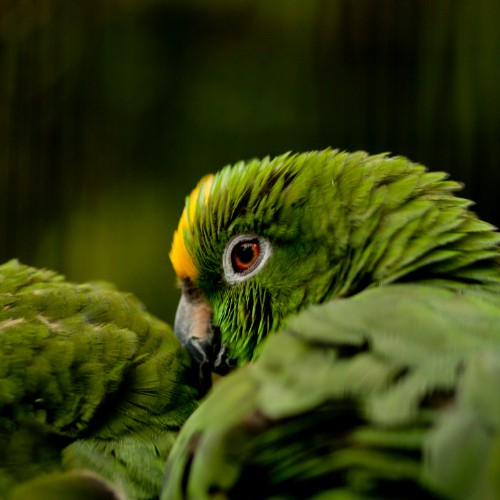
Extending beyond the recommended 40-60% humidity range can negatively impact Amazon parrots. Both low and high humidity extremes lead to health, behavior, and feather issues.
Impacts of Low Humidity Under 40%
Prolonged exposure to low humidity under 40% causes several problems:
- Dry, flaky skin - Amazon parrots rely on ambient moisture to keep their skin hydrated. Dry air dehydrates skin cells, leading to dandruff-like flakes.
- Feather breakage - Feathers become dry and brittle without adequate humidity. This causes increased feather dust as barbs split and entire feathers snap.
- Irritation and infections - Dry nasal passages, air sacs, and lungs get inflamed without proper moisture. This can worsen respiratory infections.
- Behavioral changes - Discomfort from skin and feather issues causes higher stress. This may manifest as aggressive behavior, excessive screaming, or repetitive grooming.
Boosting humidity levels, modifying environments, and providing hydration support are key to relieving these low humidity symptoms.
Dangers of High Humidity Above 60%
Excessively high humidity over 60% causes additional concerns like:
- Fungal or bacterial growth - Damp feathers and skin are breeding grounds for microbes like avian fungal infections. Mites also thrive in humid conditions.
- Poor feather quality - Similar to low humidity, improper feather maintenance occurs. However, feathers now appear clumped, greasy, and waterlogged instead.
- Respiratory irritation - Excess moisture swells airway linings. This leads to labored breathing, nasal discharge, and increased infection susceptibility.
- Lethargy - Discomfort from skin/feather issues causes appetite and activity level declines. Amazon parrots seem depressed in high ambient humidity.
Prompt reduction of overly humid air prevents these symptoms from compounding. Fans, dehumidifiers, dry substrates, and veterinary care all help address excess humidity.
Tips for Regulating Humidity Levels
Maintaining the 40-60% ideal humidity range for Amazon parrots relies on monitoring and making adjustments as needed. Here are some best practices:
Use a Hygrometer
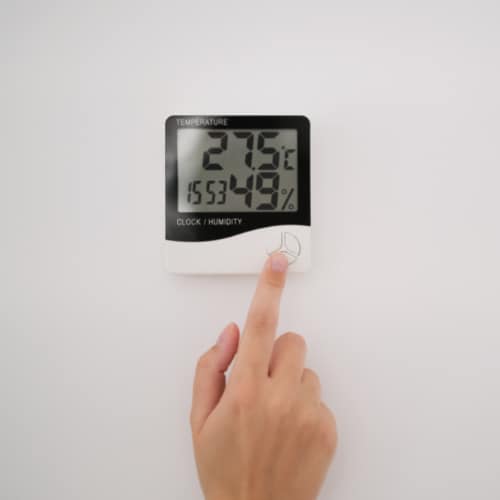
A hygrometer is essential for measuring ambient humidity. Quality hygrometers provide digital readouts of relative humidity levels in percentages.
- Place the hygrometer at the same height as the cage to assess true readings. Mount it away from direct sunlight or ventilation.
- Check the humidity at least 2-3 times per day during peak activity hours. Note any trends over time.
- Calibrate digital hygrometers routinely per manufacturer instructions. Replace faulty devices promptly.
Catching even minor humidity fluctuations early allows timely modifications.
Use Humidity-Controlling Accessories
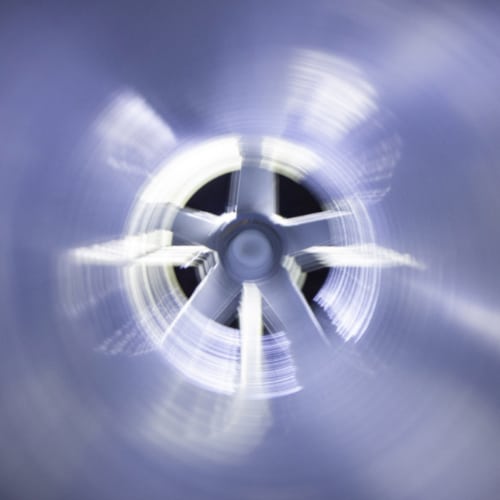
Depending on whether the air is too dry or too damp, specialized accessories can alter humidity.
- Misters, drippers, and bowls add needed moisture during low humidity. Ensure proper cleaning to prevent bacterial buildups.
- Dehumidifiers and fans reduce excess moisture from high humidity. Place them safely away from direct parrot exposure.
- Adjust substrate material, perch composition, and other cage elements to fine-tune humidity levels.
Mix, match, and adjust accessories as needed to achieve humidity equilibrium.
Adjust Environmental Factors
Wider ambient conditions also change the humidity parrots experience. As possible, adjust ambient humidity based on whole-home levels, place the cage away from direct vents, windows and doors, and set the home heating/cooling settings to moderate changes.
In some regions, achieving 40-60% humidity year-round may be difficult. In these cases, focus on cage-level accessories and veterinary guidance first.
Consistent monitoring and a multi-pronged approach help stabilize suitable humidity ranges.
Signs of Humidity Issues in Amazon Parrots
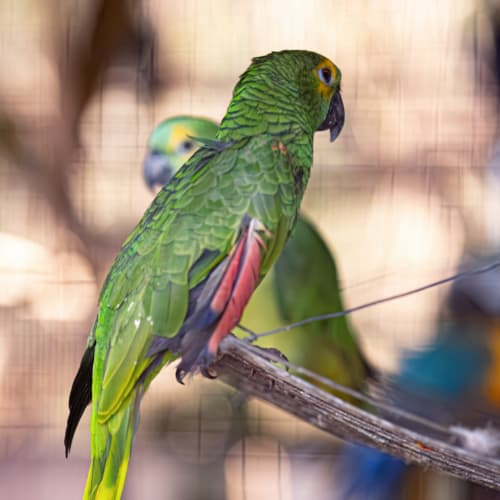
Deviation from the 40-60% ideal humidity range brings observable symptoms. Catching these early allows prompt adjustments to pre-empt more serious issues.
Symptoms of Low Humidity Under 40%
Look for these signs of overly dry air:
- Dry, flaking skin - Most prominent on feet and areas parrots can't reach while grooming
- Feather dust - Excess molted particles from brittle, broken feathers
- Damaged feathers - Misshaped, frayed feathers that appear dull and dry
- Respiratory issues - Sneezing, wheezing, nasal discharge from irritation
Skin and feather problems indicate deficient moisture levels. Respiratory symptoms may signal secondary infections.
Symptoms of High Humidity Over 60%
Excessively damp air manifests in:
- Clumped, greasy feathers - Waterlogged and matted plumage
- Skin inflammation/irritation - Redness, itching, scaly skin
- Fungal/bacterial growth - Greyish feathers and/or white patches on skin from microbes
- Lethargy and appetite loss - Likely from discomfort
Bacterial and fungal overgrowth poses serious risks, needing prompt veterinary treatment.
When to Visit an Avian Vet?
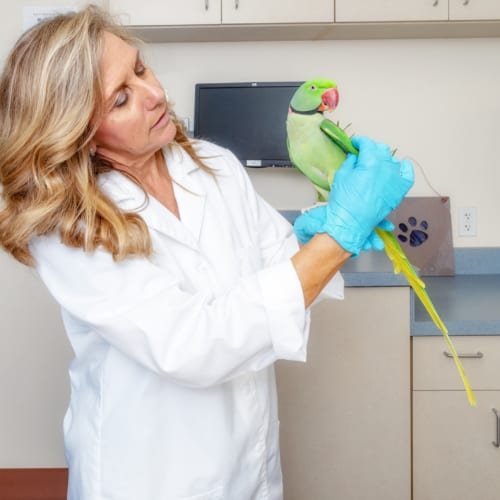
Severe symptoms related to humidity warrant medical intervention; examples include the following:
- Persistent skin inflammation or lesions
- Hemorrhagic respiratory symptoms
- Significant plumage damage
- Rapid behavioral shifts like self-mutilation
Minor symptoms can be managed with environmental/husbandry changes. However, progressive or advanced symptoms require diagnosis and medicated support.
Frequently Asked Questions
The following are commonly asked questions related to humidity levels in Amazon parrot habitat. These will help you gain more insight into the topic and ensure that your feathered friends are healthy and comfortable.
How often should I measure humidity levels?
Regular monitoring is key to maintaining a stable environment. Aim to measure humidity levels at least twice a day, particularly during seasonal changes. This practice allows for timely adjustments and ensures the continuous comfort of your parrot.
Are there natural methods to increase humidity?
Natural methods, such as incorporating live plants into the habitat and using a misting system, can elevate humidity organically. These approaches not only enhance environmental conditions but also provide a stimulating and enriching atmosphere for your parrot.
Should I adjust humidity during molting seasons?
Molting seasons demand special attention. Consider a slight increase in humidity during molting to support feather growth and ease the process for your parrot. Careful adjustments can contribute to a smoother molting experience.
What signs indicate that humidity levels are too low for my parrot?
Low humidity can manifest in dry skin, flaky feathers, and increased dust. Additionally, behavioral changes, such as excessive preening, might indicate discomfort. Regularly observe your parrot for these subtle cues and adjust humidity levels accordingly.
Are there specific breeds that require different humidity levels?
While Amazon parrots as a group share similar habitat preferences, individual species may have nuanced requirements. Research the specific needs of your parrot's breed, considering factors like native habitat and climate, to tailor humidity levels appropriately.
Final Thoughts
Proper humidity is a crucial yet often overlooked aspect of pet bird care. For Amazon parrots, maintaining a 40-60% humidity range has profound impacts on health and wellness.
By monitoring humidity actively, using hydration tools, and adjusting wider environments, you can achieve humidity equilibrium. This relieves discomfort and maintains the vibrant plumage and vigor Amazon parrots embody.
Right humidity helps Amazon parrots stay healthy, but it does not impact their natural vocal talents. Most parrots can mimic human speech to some degree. If you want to better understand why parrots talk and how they learn words, check out this article on why and how parrots talk.
We hope this article managed to provide everything you need to know to keep your pet bird(s) happy. If you have any questions or comments, please contact us.
Thanks for reading!

